|
|
|
Sort Order |
|
|
|
Items / Page
|
|
|
|
|
|
|
| Srl | Item |
| 1 |
ID:
171869
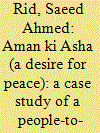

|
|
|
|
|
| Summary/Abstract |
Aman ki Asha is a joint initiative of the two leading media groups of India and Pakistan, The Times of India and the Jang Group of publications, which uses media cooperation for promoting people-to-people contacts and building peace. This is a unique initiative because in the history of peacebuilding, never before the mainstream media houses of conflicting communities are involved in such a peace initiative. Generally local media is seen inflaming the fires of conflict by following the nationalistic lines and portraying one sided picture of the conflict. After its launch in 2010, within few years Aman ki Asha emerged as one of the most successful peace initiatives between India and Pakistan but then suddenly in 2014 it became dormant when Jang group came under attack from the Pakistani military establishment and bilateral India-Pakistan relations worsened under Modi government in India. In this paper an attempt is made to provide a holistic story of Aman ki Asha covering its rise and decline. Moreover, the role played by Aman ki Asha in building peace between India and Pakistan at the top level, the middle range level and the grassroots levels is studied, and its current status is determined.
|
|
|
|
|
|
|
|
|
|
|
|
|
|
|
|
| 2 |
ID:
171868
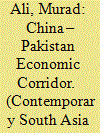

|
|
|
|
|
| Summary/Abstract |
China–Pakistan Economic Corridor (CPEC), a key artery of China’s Belt and Road Initiative (BRI), has attracted the attention of researchers and policymakers within and outside Pakistan. A blend of investment-loan-grant model of over US$ 46 billion, CPEC contains projects aimed at building energy and communication infrastructure and industrial zones. Based on the analysis of primary and secondary data, this study aims to answer two questions: first, what are the main socio-economic or geostrategic prospects of CPEC for Pakistan and China? Second, are there any constraints and challenges in the implementation of CPEC projects and how are these going to be addressed? The paper examines CPEC’s potential in bringing about socio-economic development in Pakistan and its financial and geostrategic significance for China. It also explores key constraints related to the fragile security situation and the potential of CPEC to further exacerbate the geopolitical situation in the region, particularly in South Asia, where it could intensify tension between Pakistan and India as the latter perceives CPEC as a Chinese geopolitical and security project. In addition, the long-term financial implications of CPEC are assessed, with particular focus on its potential to become a debt trap for Pakistan in the long run.
|
|
|
|
|
|
|
|
|
|
|
|
|
|
|
|
| 3 |
ID:
171864
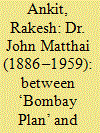

|
|
|
|
|
| Summary/Abstract |
Dr John Matthai held key ministerial offices in New Delhi during a time of transition from pre- to post-independent India. He was Finance Minister twice (1946, 1948–50) and, in between, held the portfolios of Industry & Supply and Railway & Transport. Matthai had been an academic in Madras, an administrator with the central government and an economist in Bombay with the Tata group. His wide expertise and diverse experience brought him a range of opportunities in those partisan times, including as Chairman of Taxation Enquiry Committee (1953) and State Bank of India (1955). Matthai’s ministerial appointments were unusual, his administrative challenges were unfavourable and his exit from government unexpected. In this article, I argue that his short-lived and scattered ministerial life and the record he left of it provides a unique vantage from which to view the interim times of 1946–1950 in India, with their paradigm of ‘continuity and change’.
|
|
|
|
|
|
|
|
|
|
|
|
|
|
|
|
| 4 |
ID:
171867


|
|
|
|
|
| Summary/Abstract |
Pakistan’s progress toward full democracy is dependent upon many variables. One major obstacle to establishment of a mature democracy is widespread corruption, which penetrates deep into the institutions of governance and accountability. Three civilian governments (1958–1971, 1977–1988, 1999–2008) have been overthrown by the military, and three (1988–1990, 1991–1993, 1994–1996) removed by elected presidents on charges of ‘public corruption.’ The extensive literature on causes of corruption in Pakistan has focused on the most apparent reasons, which include politicized bureaucracy, weak institutions, and incompetent political classes. No attention has been paid to the role of the National Accountability Ordinance (NAO), a legal framework under which the National Accountability Bureau (NAB) has been operating since November 1999. This study is the first to highlight the NAO’s role in spreading corruption. Rational choice theory and the economics of crime are applied to evaluate Pakistan’s anti-corruption law, particularly the settlement system. The study concludes that flaws in the law in an environment where the NAB lacks institutional autonomy result in the benefits of a crime outweighing the costs for an offender. In other words, awareness of gaps in the law increases corruption.
|
|
|
|
|
|
|
|
|
|
|
|
|
|
|
|
| 5 |
ID:
171863
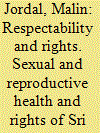

|
|
|
|
|
| Summary/Abstract |
Women in prostitution are often disrespected and subject to health risks. The aim of this study is to explore how women formerly engaged in prostitution in Sri Lanka position themselves in relation to gendered norms of respectability, and to discuss the possible implications for their sexual and reproductive health and rights (SRHR). Semi-structured qualitative interviews were conducted with fifteen women formerly engaged in prostitution. Discourse analysis was used to identify and describe interpretative repertoires and four repertoires were identified: Victimhood, Resistance, Responsibility, and Independence. The first three were drawn upon to construct their identities in line with norms of female respectability, as the women emphasised being victims of unfortunate situations, resisting sexual disrespectability and taking responsibility for their children and others. The last repertoire deviated from the respectability norm as it conveyed a picture of the women as independent, strong and courageous subjects, characteristics more in line with male respectability in Sri Lanka. Despite marginalised and oppressive circumstances, the women drew on interpretative repertoires to enhance access to respect, dignity and resources. However, their vulnerability to violence, SRHR risks and virtual absence of rights leave them with little access to resources that could enable a healthier and better life.
|
|
|
|
|
|
|
|
|
|
|
|
|
|
|
|
| 6 |
ID:
171865


|
|
|
|
|
| Summary/Abstract |
South Asia is a site of myriad forms of dispossession and displacement. I draw on ethnographic research at an East Bengali dalit refugee camp-site in the suburbs of Calcutta, exploring how past displacements have mediated the refugees’ present and how they negotiate continued dislocations engendered by the Indian state. In this article, I pose the following questions: how do mechanisms of prolonged displacement affect lower caste and class groups in the postcolony and how do the displaced groups negotiate it from below? What is the nature of transformation they experience in the patterns of their citizenship/subject position? In exploring conditions of protracted displacement, the article foregrounds the role of strategies of informalisation and grey-spacing through which urban governance functions. While this study identifies dalit refugees to be active agents negotiating myriad forms of dispossession, a point of emphasis remains that they are placed in unequal power relations vis-à-vis the insidious mechanisms of post-colonial governmentality. The continually displaced inhabitants of spaces of ‘permanent-temporariness’ carry on struggles that are discreet, low-key and non-heroic in nature. The paper further highlights that the sense of belonging of such dwellers of peripheral grey-spaces often strikes a discordant note.
|
|
|
|
|
|
|
|
|
|
|
|
|
|
|
|
| 7 |
ID:
171861


|
|
|
|
|
| Summary/Abstract |
Muslim personal laws in India have never been systematically codified, in marked contrast both to Hindu family laws in India and to Islamic family laws in much of the Muslim-majority world, both of which have been subject to a far greater degree of codification. This article examines the call being made by one prominent contemporary Muslim women's organisation, the Bharatiya Muslim Mahila Andolan (BMMA), for the wholesale codification of Muslim family laws in India as a pathway to protecting women's rights. Following a discussion of the wider context of India's uncodified Muslim personal law system, this paper offers a commentary on the BMMA's draft Family Law Act, first released in 2014. It demonstrates how this document synthesises discourses of women's rights drawn from a series of Qur’anic, constitutional and transnational reference points. By drawing from such diverse sources, and while legal codification in much of the Islamic world has instituted fundamentally patriarchal legal norms, the BMMA's proposed code articulates a distinctive, more gender-equal reading of Islamic family law.
|
|
|
|
|
|
|
|
|
|
|
|
|
|
|
|
| 8 |
ID:
171866
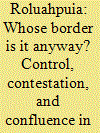

|
|
|
|
|
| Summary/Abstract |
The implementation of the Look East Policy (LEP) ─ now the Act East Policy ─ in the 1990s signaled a marked shift in India’s economic policy aimed at transforming its northeastern region from a peripheral frontier to an economic corridor. The regional focus of the policy commonly appears in references to the northeast region as a whole and the policy suggestions are centered on ending the region’s isolation and underdevelopment. This paper looks at how the inhabitants of a borderland village on the Mizoram-Myanmar border maneuvered themselves in response to the economic drive for the border opening intertwined with the extension of state rule and control. The paper shows how the agenda of the state and the local communities, rather than being in opposition, often converged with local community interests when it came to enhancing trade and liberalizing movement. These factors further served to re-shape ways of identification and belonging as well as everyday trade, commercial transactions, and nationhood. Against this backdrop, the paper engages with everyday borderland lives to examine how change through the policy was mediated upon the interface of competing state and non-state agents as well as local communities.
|
|
|
|
|
|
|
|
|
|
|
|
|
|
|
|
| 9 |
ID:
171862
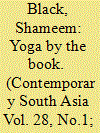

|
|
|
|
|
| Summary/Abstract |
This essay analyses the cultural politics of yoga through a literary history of its twentieth- and twenty-first-century connection to books. The midcentury instruction manual for postural yoga, exemplified by B.K.S. Iyengar’s Light on Yoga, created a postcolonial literary genre that aimed to resolve particular tensions within the structure of Indian identity in a globalizing world. This genre has influenced the rise of twenty-first-century yoga fiction in Western popular culture in English. Ironically, such fiction also works against ideals of globalized Indianness projected through Iyengar’s manual. Through this exploration of yoga in print culture, this essay argues that the cultural instruction performed through writing is not just about yoga, but part and parcel of yoga itself.
|
|
|
|
|
|
|
|
|
|
|
|
|
|
|
|
|
|
|
|
|